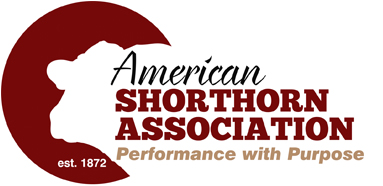As many of you are entering calving season, this is a good opportunity to remind you of the important information to collect in your calving book. There are some points that are mandatory for recording your Shorthorns into Digital Beef, as well as others that are vital pieces of the puzzle for our genetic predictions in early life traits. Some things will help you with management of the herd going forward from calving season. Below is a breakdown of the items you need to be prepared to take note of this year:
The essentials. These are the items that are required to record any calf into the registry: pedigree (sire and dam), birth date, an individual ID (tattoo), coat color, and whether the calf is horned, polled, or scurred. I know it’s not always easy to determine polled status at such a young age, but you will eventually need that data point when you enter your 2023 calf crop.
Calf measurables. Calving ease score and birth weight are useful pieces to the genetic evaluation puzzle to collect in the calving barn. If you’re unfamiliar with the calving ease scoring system, a 1 designates calves born unassisted, and the numeric score increases with the amount of assistance required to get the calf into the world. These data options are spelled out for you when entering calves into Digital Beef. For birth weight, you have the option to indicate if the weight you are recording was taken by a scale, a birth weight measuring tape, or a visual estimation. Please, do NOT record guesses by visual estimation. A scale or tape are miles more accurate than trying to guess a weight, and poor weights only hurt the quality of our genetic evaluation tools.
Record the entire crop. When you collect those calving ease and birth weights, record them into the record system on every calf in the herd, even if you do not intend to register them. A complete dataset tells the most honest picture of your genetics and does a better job identifying the outstanding and the underwhelming than only recording those you choose to register. This philosophy applies to all collected data points, not just calving ease and birth weight.
Consider the mother. Pre-calving body condition scores might be helpful in planning your nutritional needs postpartum, especially if your cows are coming up thinner than expected. Scoring the udder for teat size and suspension of the udder should be done within the first 24 hours after calving. Both udder traits are on a 1 to 9 scale, with 9s being very small teats and super tight suspensions. There are visuals available online to give you a reference to the scoring chart. The Beef Improvement Federation guidelines are the most helpful drawings I have found for clear definitions of the various scores.
Health records. Any treatments of cow or calf in the early stages of life are important to note. Having this information can come in handy later in the year when making decisions, or to jog your memory when that poor-doing calf at weaning is the same little guy you treated three times early on.
Personal info. If you want to record how much sleep you lost doing nighttime checks on your maternity ward, that’s up to you. While this data can’t be input into the registry, it might serve as a reminder to the sacrifices we make for our herd.
Best of luck with your calving season. While we might both be making middle of the night checks, wait until the sun rises to call and chat, just in case it’s the one night that all is calm out in the barn, and we can catch a few extra minutes of sleep.
written by: Matt Woolfolk, ASA Director of Performance Programs





![[ Random Image ]](/wp-content/themes/shorthorn/headers/header13.jpg)